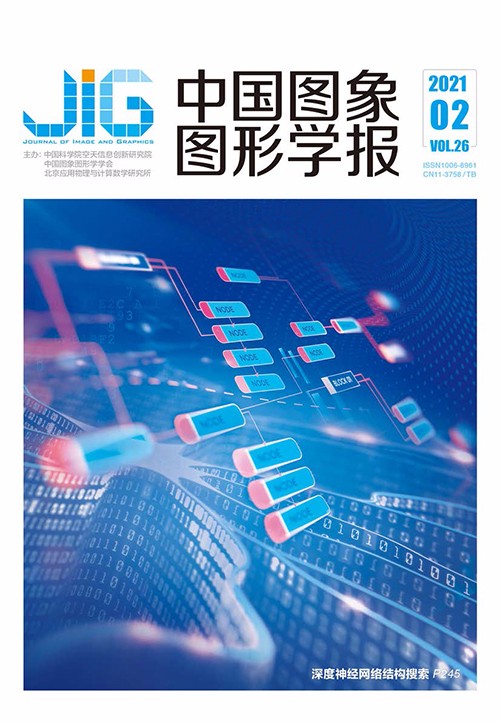
轨道病害视觉检测:背景、方法与趋势
摘 要
铁路作为国家重要基础设施、国民经济大动脉和大众化运输方式,对社会经济发展起着不可替代的支撑作用。轨道是铁路系统的重要组件,轨道病害检测是铁路工务部门的核心业务。传统的人工巡检不仅费时费力,而且检测结果容易受到各种主观因素的影响。因此,自动化轨道病害检测对维护铁路运输安全具有重要的现实意义。考虑到视觉检测在速度、成本和可视化等方面的优势,本文聚焦于轨道病害视觉检测技术。首先以广泛应用的无砟轨道为例介绍轨道的基本结构,对常见的轨道表观病害进行样例展示、成因分析和影响评价;简要梳理常见的自动化轨道检测技术的基本原理和应用场景,对轨道病害视觉检测面临的图像质量不均、可用特征较少和模型更新困难等主要挑战进行归纳;然后,依照前景模型、背景模型、盲源分离模型及深度学习模型的分类逻辑对轨道病害视觉检测领域的研究现状进行综述,简要介绍了各类方法的代表性工作,总结了各类方法的技术特点与应用局限性;最后,针对智能化铁路的发展需求,展望了未来轨道病害视觉检测技术的研究趋势,即利用小样本/零样本学习、多任务学习与多源异构数据融合等技术手段来解决当前视觉检测系统中的鲁棒性弱、虚警率高等问题。
关键词
Visual inspection of rail defects: background, methodologies, and trends
Wang Jianzhu1, Li Qingyong1, Zhang Jing1, Gan Jinrui2(1.Beijing Key Laboratory of Traffic Data Analysis and Mining, Beijing Jiaotong University, Beijing 100044, China;2.Artificial Intelligence on Electric Power System State Grid Corporation Joint Laboratory, Beijing 102209, China) Abstract
As a national critical infrastructure, economic artery, and popular transportation, a railway plays an irreplaceable role in supporting the economic and social development of a nation. The rail is the key component of a railway, and correspondingly, rail defect detection is a core activity in railway engineering. Traditional manual inspection is time-consuming and laborious, and its results are easily influenced by various subjective factors. Therefore, automatic defect inspection for maintaining railway safety is highly significant. Considering the advantages of visual inspection in terms of speed, cost, and visualization, this study focuses on machine vision-based techniques. The track structure is first introduced by using the widely used ballastless track as an example. Sample presentation, causal analysis, and impact assessment of typical surface defects are provided. Then, the basic principles and application scenarios of common automatic rail defect detection technologies are briefly reviewed. In particular, ultrasonic techniques can be used to detect rail internal flaws, but it can hardly inspect fatigue damage on rail surface because of factors, such as ultrasonic reflection. Furthermore, detection speed is typically unsatisfactory. Eddy current inspection can obtain information about rail surface defects with the use of a detection coil by measuring the variance of eddy currents generated by an excitation coil. In contrast with ultrasonic technology, eddy current testing is fast and exhibits a distinct advantage in terms of detecting defects, such as shelling and scratch. However, it fails at finding defects that are located at the rail waist and base. Consequently, eddy current detection is frequently used in conjunction with ultrasonic equipment. Notably, eddy current inspection has high requirements for the installation position of the detection coil and the actual operation. Debugging the equipment is a complicated task, and the stability of the detection result is insufficient. Thereafter, current major challenges in the visual inspection of rail defects, namely, inhomogeneity of image qualities, limitation of available features, and difficulty in model updating, are summarized. Then, research actuality in the visual inspection of rail defects is systematically reviewed by categorizing the techniques into foreground, background, blind source separation, and deep learning-based models. One or two representative studies are elaborated in each category, followed by the analysis of technical features and practical limitations. In particular, foreground models typically suppress disturbing noise through operations, such as local image filtering, which can enhance contrast between the defect and the background, and thus, help recognize rail surface defects. This type of models generally exhibits low computational complexity, and thus, can meet the requirements of real-time inspection. However, they easily generate false positives and can hardly segment the defect target. Instead of directly placing emphasis on the defect, background methods model the image background by utilizing the spatial consistency and continuity of the rail image. Similar to foreground models, such methods also exhibit good real-time performance, but effectively decreasing false detection still requires further research. Blind source separation models detect rail defects on the basis of the low rank of the image background and the sparseness of the defect. Compared with the aforementioned two types of models, these approaches do not simply rely on the low-level visual characteristics of the defect target. However, these models tend to require high computational complexity. Deep learning-based models generally exhibit promising performance in the visual inspection of rail defects. However, training a deep learning model frequently requires a large amount of samples, and collecting and labeling numerous defect images can be costly. Moreover, these approaches typically depend on a dataset with specific supervision information, and thus, they may not perform well in other similar scenarios. Finally, future research trends in the visual inspection of rail defects are prospected by targeting the development requirements of smart railways. That is, technologies, such as few-shot or zero-shot learning, multitask learning, and multisource heterogeneous data fusion, should be explored to solve the problems of weak robustness and high false alarm rate existing in current visual inspection systems.
Keywords
|



 中国图象图形学报 │ 京ICP备05080539号-4 │ 本系统由
中国图象图形学报 │ 京ICP备05080539号-4 │ 本系统由